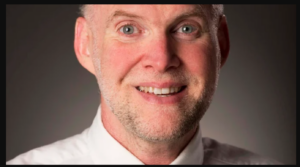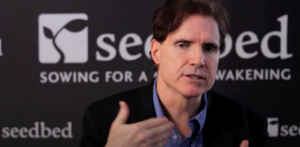I want to ask you to put your hand at the back of your head, where your head meets your neck. That place is the fear center of your brain. When you’re faced with a threat, all your thinking moves back to that place. This part of your brain knows nothing but survival. Some of us visit this place every once in a while. Some of us have taken up residence there; we’ve purchased a condo and moved in.
What are the fears that send you back to this place?
Now, put the heel of your hand to your forehead. The front part of our brains is where rational thinking happens, and it is also where our identity center is. This is where our life purpose is worked out. They say this is also where personal faith is developed.
It happens far from our fear center.
Joyce Meyer tells the story of Elisabeth Elliot, whose husband was killed along with four other missionaries in Ecuador in the nineteen fifties. After that tragedy, Elisabeth’s life was completely controlled by fear. She wanted to continue her husband’s work but was paralyzed by fear. Then a friend told her something that set her free. She said, “Why don’t you do it afraid?” It sounded simplistic … but on that advice, Elisabeth went on to evangelize the Indian tribes of Ecuador, including the very people who had killed her husband.
Being stuck in fear – worried about possible outcomes and afraid to step out – keeps us far from the place where faith develops. So why not do it afraid? Even if our mouth is dry and our knees are shaking, when we step out in faith, we are deciding that our lives will not be ruled by our fears.
In the world of missions and ministry, “doing it afraid” is probably more common than not. I’m guessing every pastor and cross-cultural worker has a story of stepping out when they had no idea if the ground would meet that next step. Those who step out deserve our respect. They are at the front of Kingdom advancement.
This is exactly how the Kingdom comes: not when we do it perfectly, but when we do it faithfully.








